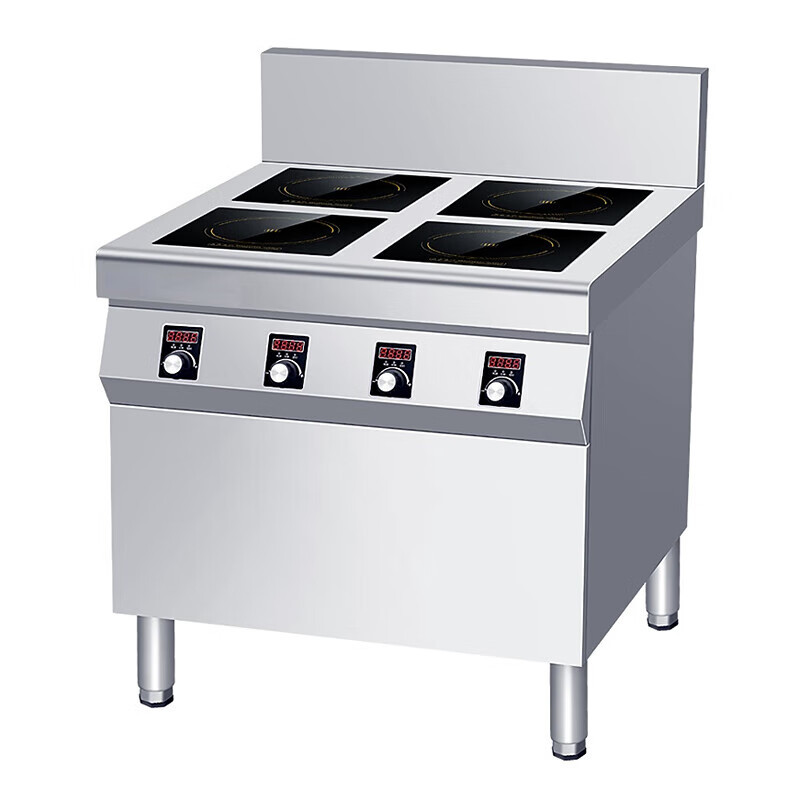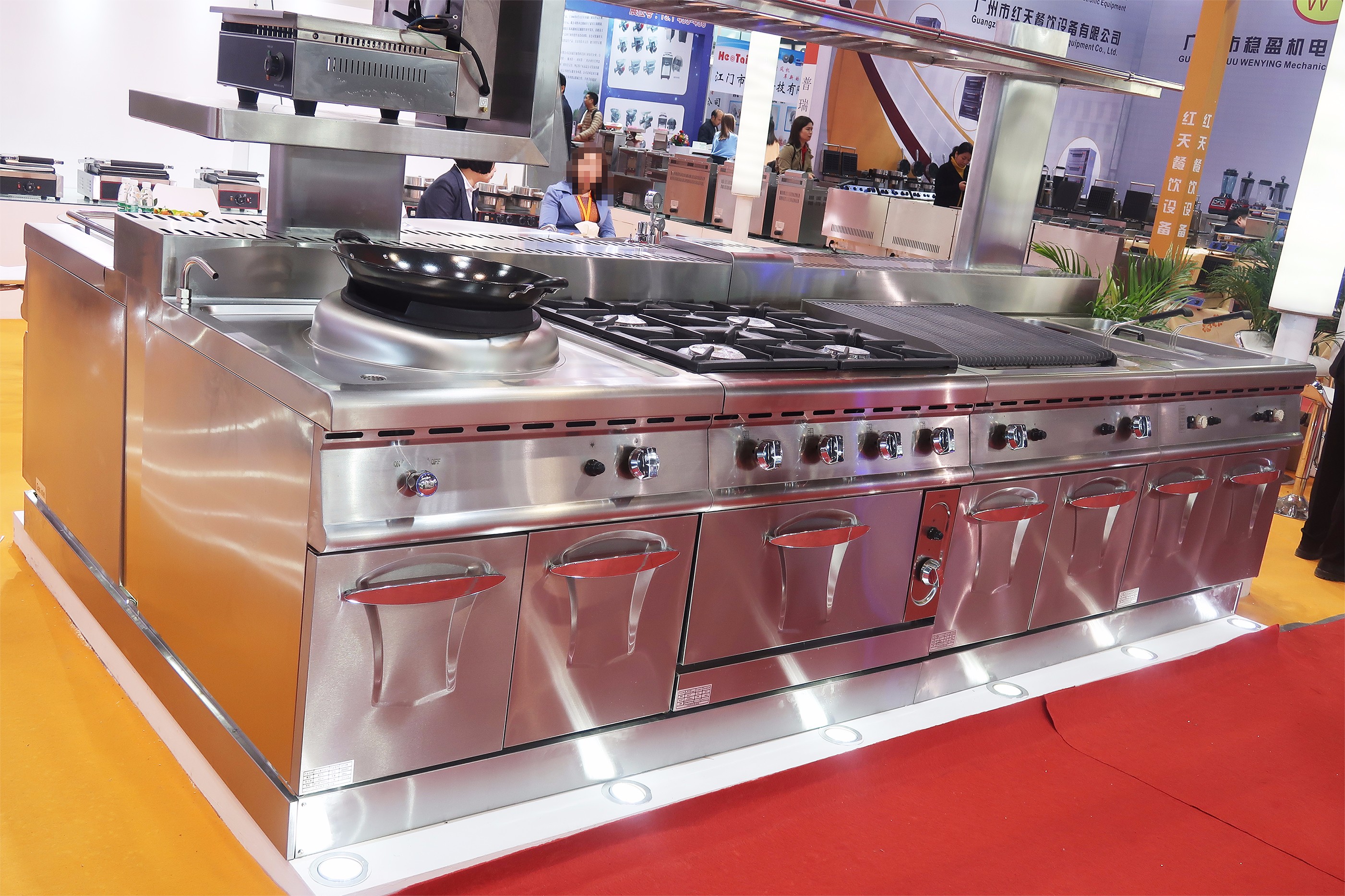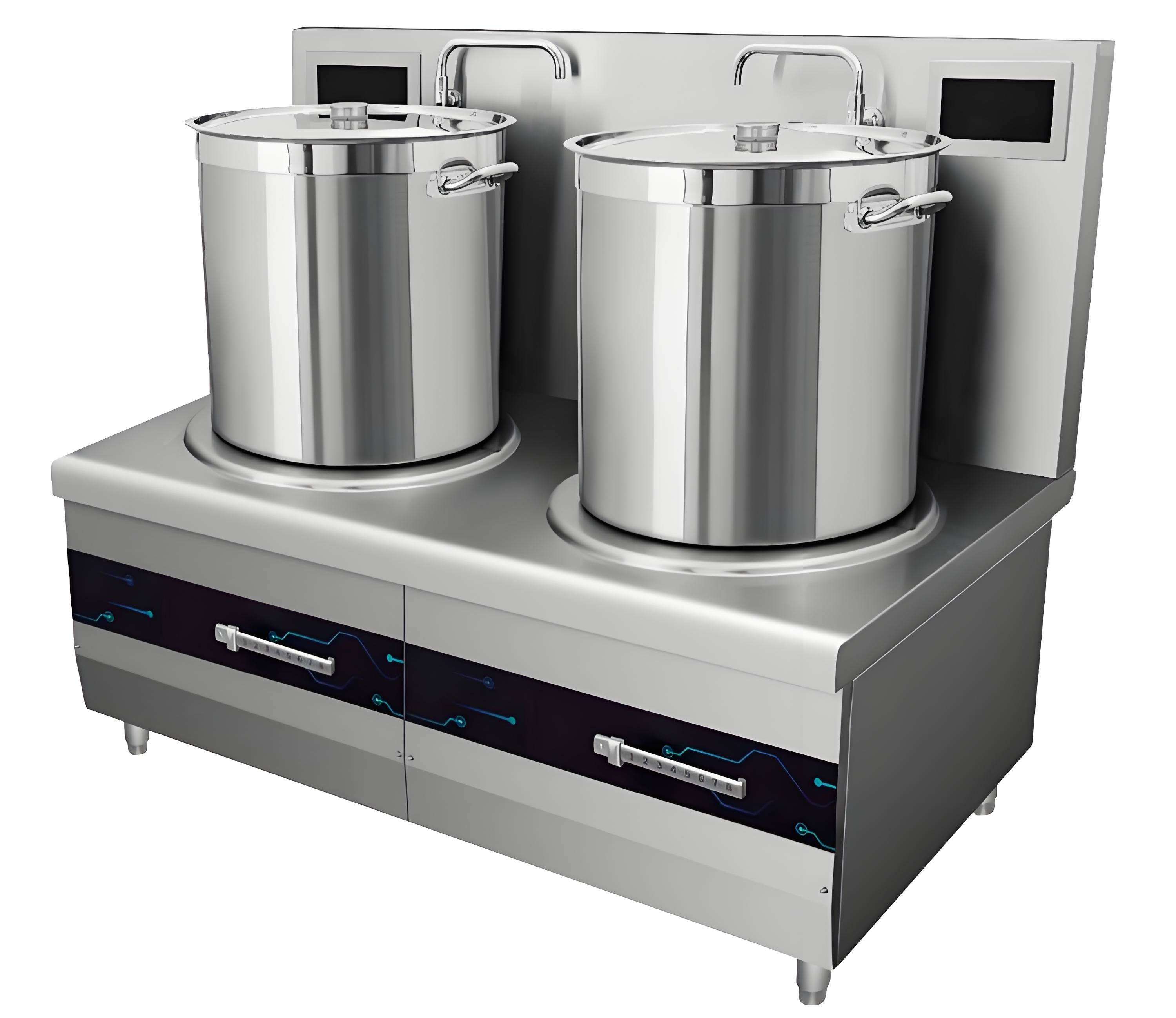As someone who’s been in the commercial kitchen equipment industry for over a decade, I’ve seen firsthand how induction cookers have transformed professional kitchens. Their efficiency, precision, and safety make them a go-to choice for restaurants, hotels, and catering businesses. But when it comes to selecting or maintaining a commercial induction cooker, understanding its core configurations is critical to ensuring performance, durability, and value for money. In this guide, I’ll walk you through the essential components that make up the heart of these machines, sharing insights from my experience to help you make informed decisions.

Why Core Configurations Matter
The core of a commercial induction cooker—often referred to as its “movement” or internal system—determines its reliability, efficiency, and ability to handle the demands of a busy kitchen. Unlike residential models, commercial induction cookers are built for high-volume, continuous use, so their internal components must be robust and optimized. Whether you’re a restaurant owner upgrading your equipment or a technician troubleshooting performance issues, knowing the key parts and their roles will save you time, money, and headaches.
In my early years working with kitchen suppliers, I noticed that many buyers overlooked the internal specs, focusing only on price or brand. This often led to costly repairs or underperforming units. To avoid those pitfalls, let’s dive into the core configurations that define a high-quality commercial induction cooker.
Key Components of a Commercial Induction Cooker
The core of an induction cooker is a sophisticated system of electrical and magnetic components working together to generate heat efficiently. Below, I’ll break down the primary elements, their functions, and what to look for when evaluating them.
1. Induction Coil
The induction coil is the heart of the cooker, responsible for creating the electromagnetic field that heats the cookware. In commercial settings, these coils are typically made of pure copper due to its superior conductivity and thermal efficiency. I’ve worked with units using aluminum or copper-clad aluminum coils, but they often fall short in performance and longevity, especially under heavy use.
Key Features to Check:
Material: Pure copper is ideal for maximum efficiency.
Diameter: Larger coils provide a wider heating zone, ideal for large pots or woks.
Number of Turns: More turns enhance inductance, improving heat output.
Magnetic Strips: These amplify the magnetic field, boosting performance.
In my experience, coils with a higher number of turns and magnetic strips deliver more consistent heating, especially for tasks like stir-frying or boiling large volumes of water. Always ask the manufacturer for coil specifications, as these directly impact cooking speed and energy efficiency.

2. IGBT (Insulated Gate Bipolar Transistor)
The IGBT is like the brain of the induction cooker, controlling the power flow to the coil. High-quality IGBTs, such as those from Infineon (a German brand renowned in the industry), ensure stable operation and fast response times. I’ve seen cheaper units with low-grade IGBTs overheat or fail after a few months of heavy use, causing costly downtime in restaurants.
What to Look For:
Brand: Infineon IGBTs are the gold standard for reliability.
Voltage Stability: Look for IGBTs designed to handle grid fluctuations, common in commercial kitchens.
Cooling Mechanism: Paired with high-frequency cooling fans, top-tier IGBTs can operate for thousands of hours without issues.
A client once shared how swapping a generic IGBT for an Infineon model reduced their cooker’s failure rate by 80%. It’s a small component with a big impact.
3. PCB (Printed Circuit Board)
The PCB is the nervous system, coordinating all electronic functions. A well-designed PCB ensures precise control over temperature, power, and safety features. In commercial induction cookers, I recommend looking for units with self-developed PCBs tailored to the specific model, as generic boards often lack the precision needed for high-power applications.
Key Considerations:
Dual-Core Control: Advanced models use separate microcomputer chips for the main control and display, enabling high-precision adjustments.
Durability: Boards with integrated circuits and thick copper bridges (e.g., 1.5mm) handle higher currents safely.
Compatibility: Ensure the PCB is optimized for the cooker’s power output and cooking style (e.g., wok vs. flat-top griddle).
I once helped a restaurant troubleshoot a cooker that kept shutting off mid-service. The issue? A poorly designed PCB couldn’t handle the high-power demands. Upgrading to a dual-core PCB solved the problem instantly.
4. Cooling System
Commercial kitchens are intense environments, and induction cookers generate significant heat internally. A robust cooling system, typically featuring twin-turbo high-frequency fans, is essential to protect components like the IGBT and PCB. I’ve seen units with inadequate cooling fail within months, especially in high-volume settings like Chinese restaurants.
What to Prioritize:
Fan Type: Twin-turbo fans are more effective than single fans.
Noise Level: Look for systems with soft-start designs to keep noise below 45 decibels.
Maintenance: Easy-to-clean or replaceable fans extend the cooker’s lifespan.
A tip from my years in the field: regularly clean the cooling vents to prevent dust buildup, which can reduce fan efficiency and cause overheating.

5. Power Supply and Circuitry
The power supply and circuitry determine how efficiently the cooker converts electricity into heat. Commercial induction cookers typically operate at 380V for heavy-duty models or 120-240V for countertop units. The circuitry should include a combined capacitor design and a thick copper bridge to handle high currents safely.
Key Specs:
Voltage Compatibility: Ensure the cooker matches your kitchen’s electrical setup.
Current Capacity: A 1.5mm-thick copper bridge can handle 10 times the rated current of standard PCBs.
Safety Features: Look for leakage protection switches and over-temperature shutdown mechanisms.
I once worked with a catering company that struggled with frequent power trips. The culprit was a cooker with inadequate circuitry for their 380V setup. Switching to a model with a robust copper bridge solved the issue.
Comparing Core Configurations Across Models
To make things easier, here’s a table summarizing the key components and what to look for in high-quality commercial induction cookers:
|
Component |
Key Feature |
Why It Matters |
Recommended Spec |
|---|---|---|---|
|
Induction Coil |
Pure copper, large diameter |
Ensures fast, even heating |
100% copper, 8+ turns, magnetic strips |
|
IGBT |
High-voltage stability |
Prevents failures under heavy use |
Infineon brand, fast response |
|
PCB |
Dual-core control, thick copper bridge |
Enables precise control and durability |
Self-developed, 1.5mm copper bridge |
|
Cooling System |
Twin-turbo fans, low noise |
Protects components, extends lifespan |
High-frequency fans, <45 dB |
This table has saved me countless hours when advising clients on equipment purchases. It’s a quick way to compare models and avoid low-quality options.
Practical Tips for Choosing and Maintaining Core Configurations
Over the years, I’ve learned a few practical lessons about selecting and maintaining commercial induction cookers. Here are some tips to ensure you get the most out of your investment:
Match Components to Cooking Style: If you run an Asian restaurant, prioritize wok-specific coils with larger diameters. For Western-style kitchens, flat-top griddles with precise temperature control are key.
Check Manufacturer Specs: Always request detailed specs for the coil, IGBT, and PCB. Reputable brands like Lestov provide transparent documentation.
Invest in Quality: Cheaper models often cut corners on IGBTs or cooling systems, leading to frequent repairs. Spending more upfront saves money long-term.
Regular Maintenance: Clean cooling vents monthly and inspect the PCB for dust or corrosion. I’ve seen simple maintenance double a cooker’s lifespan.
Train Your Staff: Ensure your team knows how to operate the cooker properly, especially the magnetic induction gear switch, to avoid overloading the system.
I recall a time when a client’s kitchen staff kept cranking the cooker to maximum power for every dish, causing the IGBT to overheat. A quick training session on proper power settings solved the problem and extended the unit’s life.

Real-World Applications and Benefits
The right core configuration isn’t just about technical specs—it directly impacts your kitchen’s performance. For example, in a busy Chinese restaurant I worked with, switching to a cooker with a double-layer copper coil and Infineon IGBT cut cooking times by 30% and reduced energy costs by 35%. The twin-turbo cooling system also kept the kitchen cooler, improving staff comfort during long shifts.
Another client, a catering business, opted for a portable countertop model with a robust PCB and high-wattage coil. This allowed them to handle large events efficiently, with precise temperature control for delicate dishes like sauces and desserts. The safety features, like automatic pan detection and over-temperature shutdown, gave them peace of mind during high-pressure events.
Common Pitfalls to Avoid
From my years in the industry, I’ve seen a few recurring mistakes when it comes to core configurations:
Ignoring Coil Quality: Cheaper coils (e.g., aluminum) wear out quickly and reduce heating efficiency.
Overlooking Voltage Requirements: Mismatched voltage can damage components or cause power trips.
Neglecting Cooling Systems: Inadequate cooling leads to premature IGBT or PCB failure.
Skipping Maintenance: Dust and grease buildup can cripple even the best-configured cookers.
One memorable case involved a restaurant that bought a budget model with a single fan and generic IGBT. Within six months, the unit failed during peak service, costing them thousands in lost revenue. A higher-quality model would have paid for itself in reliability.
Future Trends in Induction Cooker Configurations
The industry is constantly evolving, and I’ve noticed some exciting trends in core configurations. Manufacturers are now integrating smart control systems with IoT capabilities, allowing remote monitoring of component performance. Some high-end models even use AI to optimize power distribution based on cooking patterns. Additionally, advancements in coil design are enabling cookers to work with non-ferrous cookware, like aluminum, expanding their versatility.
In my discussions with suppliers, I’ve also seen a push toward modular designs, where components like the PCB or IGBT can be easily replaced without swapping the entire unit. This could be a game-changer for reducing repair costs in commercial kitchens.

Wrapping Up
After years of working with commercial induction cookers, I can’t stress enough how important it is to understand their core configurations. The induction coil, IGBT, PCB, and cooling system are the backbone of any reliable unit. By choosing a cooker with high-quality components and maintaining it properly, you’ll ensure faster cooking, lower energy costs, and a safer kitchen environment. Whether you’re outfitting a new restaurant or upgrading existing equipment, take the time to evaluate these components—it’s an investment that pays off in the long run.
If you’re unsure where to start, reach out to reputable manufacturers or suppliers for detailed specs. And don’t hesitate to share your experiences or questions—I’m always happy to connect with fellow kitchen professionals to exchange ideas and solutions.
Related Questions and Answers
Q: How do I know if my induction cooker’s IGBT is high quality?
A: Check the brand—Infineon is the industry leader. Also, look for specs like voltage stability and cooling compatibility. If the manufacturer doesn’t provide clear documentation, that’s a red flag.
Q: Can I use aluminum cookware with a commercial induction cooker?
A: Most commercial cookers require ferromagnetic cookware (e.g., cast iron or stainless steel). Some newer models, like certain Panasonic units, support non-ferrous metals, but they’re rare and expensive.
Q: How often should I clean the cooling system?
A: Clean the vents monthly to prevent dust buildup. If your kitchen is particularly greasy, check every two weeks. A clogged cooling system can cause overheating and component failure.
Q: What’s the difference between a single-layer and double-layer copper coil?
A: Double-layer coils have more turns and magnetic strips, providing faster and more even heating. They’re ideal for high-volume kitchens but cost more upfront.
Q: Why does my induction cooker shut off unexpectedly?
A: This could be due to an overheating IGBT, inadequate cooling, or a mismatched power supply. Check the voltage compatibility and ensure the cooling fans are working properly.




